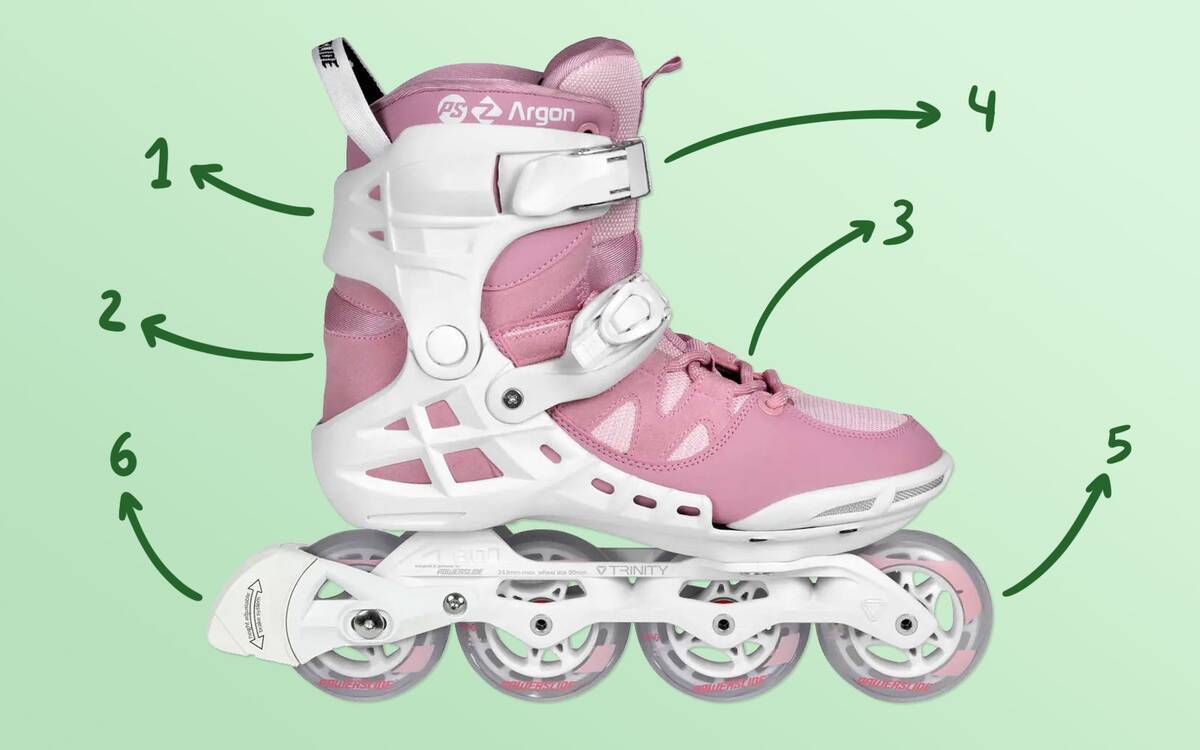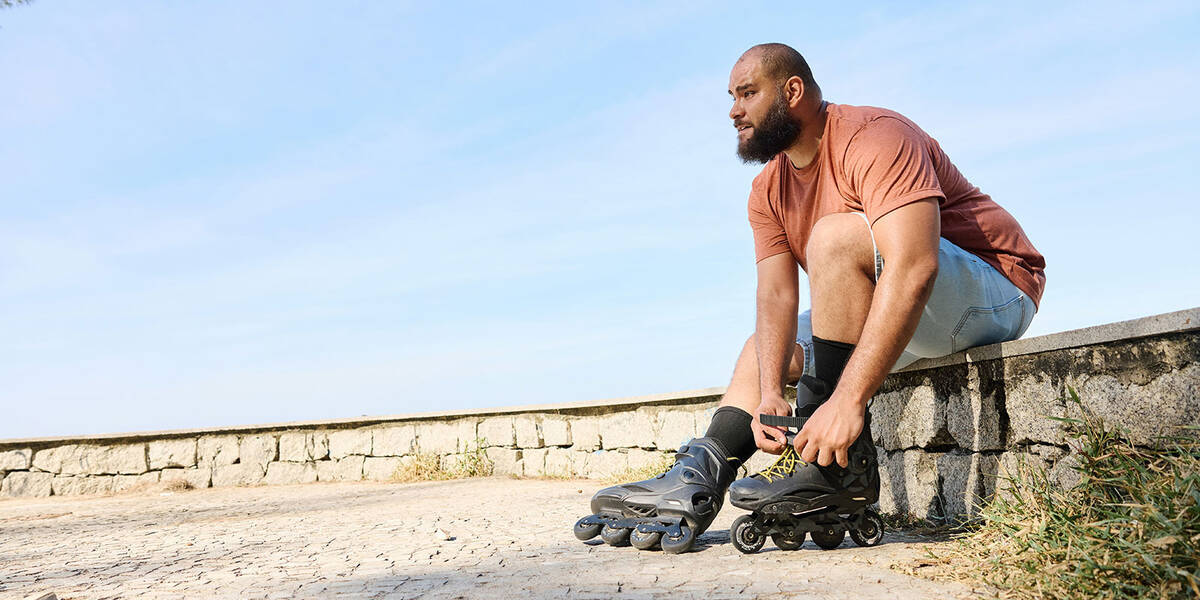How to Choose the Ideal Inline Skates for Beginners
When searching for the ideal inline skates for those just starting out, it's vital to select a pair that provides comfort and stability, ensuring a rewarding skating experience. To assist you in navigating the extensive selection available when picking your first inline skates, we have curated some top advice in this guide. You'll discover all the crucial insights needed to choose the perfect pair of beginner inline skates.
Among our inline skates range, you will find a variety of excellent options suitable for beginners. Skates designed for beginners typically belong to the recreational or fitness inline skate categories. These terms usually indicate that the skates are crafted for versatile, general use rather than specific activities like speed skating or aggressive skating. Perfect for travel, exercise, and casual enjoyment, they deliver a great mix of performance and comfort.
Overview
Which Inline Skates Are Ideal for Beginners?

When selecting beginner inline skates, consider these features for best performance and comfort:
- High cuffs for lateral support: Provide stability and support to your ankles.
- Breathable liners with foam: Ensure comfort and airflow during use.
- Lacing options: Traditional laces, speed lacing, or BOA systems for a secure fit.
- Powerstrap and buckle: Secure your foot firmly in place.
- Small wheels (no bigger than 90 mm in diameter): Ideal for improved control and manoeuvrability for beginners.
- Heel brake: Allows you to manage your speed and brake securely.
Within our collection of inline skates, you will find beginner-friendly models suitable for all ages and tastes. In any inline skate category, we suggest filtering results by skill level.
Determining the Right Size for Beginner Inline Skates

Finding the correct skate size is crucial when setting off on your new wheeled adventure. When buying skates online, refer to the size guide for the particular model you have in mind and select your skates based on a precise foot measurement.
For accurate foot measurement, begin by placing your heel against a wall. Measure from the wall to the tip of your longest toe, ensuring the measurement is at a 90-degree angle from the wall.
measuring your feet accurately
- Use a hard, flat surface: Stand with your back against the wall on a hard, flat surface for precise measurements.
- Wear the socks you'll skate in: Wear the socks you intend to use with your skates while measuring your feet.
- Place a piece of paper against a wall: Lay a piece of paper on the floor with one edge against the wall.
- Stand straight: Stand upright with your heel against the wall and your foot flat on the paper.
- Mark the toe tip: Make a mark on the paper at the point of your longest toe.
- Measure both feet: As one foot is typically slightly larger, measure both feet. Use the larger measurement when choosing your skate size.
Get your ruler and measure the foot�s length on the paper. Now you've determined your mondopoint size, which will guide you when checking inline skate size charts.
What is the Best Fit for Inline Skates?

Inline skates need to be snug but should remain comfortable. Comfort and proper fitting are essential as it ensures energy is transferred efficiently from your legs to the skates. Keep these factors in mind when trying your first pair:
- Break-In Period: Skates often require a break-in period. While initially stiff, they should become more comfortable with time.
- Heel Lock: Your heel should be securely positioned within the heel cup with minimal lift. A well-fitted heel lock enhances control and reduces the chance of blisters.
- Toe Space: Toes should nearly touch the inline skates' tip but shouldn't be cramped. Sufficient space is necessary for slight toe movement.
- Ankle Support: The ankle should feel secure but not so tight as to restrict blood flow. Bent knees should feel comfortable without excessive pressure on the ankles.
- Closure Systems: Adjust laces, buckles, and straps for a secure fit. The inline skate should provide enough snugness to support your foot comfortably while allowing good circulation.
Getting Through the Break-In Period for Inline Skates
As a novice, your feet are entirely new to being enclosed within skates. Even perfectly fitting skates need a break-in period, during which the skin on your feet, ankles, and shins toughens up.
Here are some tips to help with the break-in phase:
- Take Your Time: Breaking in skates might take up to a month. Begin with shorter skating sessions and gradually increase duration. Some discomfort is normal initially as your feet adjust to the activity.
- Relax Your Feet: Focus on keeping your feet relaxed and avoid overtightening laces or straps.
- Blister Prevention: Experiment with different socks to determine comfort. Insoles are beneficial. Footies can significantly reduce blisters, particularly around heels and ankles.
If you continue to experience pain or discomfort, seek medical advice. Enjoy the process as your skates harmonise with your feet and style.
Further insights on insoles, footies, and transitioning to new skates can be found in our article:
Braking Techniques for Novice Inline Skaters
Beginner inline skates are equipped with brakes at the back, typically as a heel brake. This configuration offers an intuitive braking technique that is advantageous for newcomers still mastering control. A standard heel brake provides a safer and easier braking option, presenting a clear benefit for beginners.
Essential Protective Gear for New Inline Skaters

Wearing protective gear is crucial to ensure safety while inline skating. Here is the essential gear for new skaters:
- Helmet: A properly fitting helmet is critical to prevent serious head injuries.
- Wrist Guards: Offer support and cushioning to prevent wrist injuries during falls.
- Knee Pads: Protect your knees from scrapes, bruises, and fractures.
- Elbow Pads: Shield your elbows from impacts and abrasions.
Using this protective gear minimises injury risks, making your skating experience safer and more enjoyable.
To enjoy inline skating safely, we encourage all beginners to acquire protective gear.

